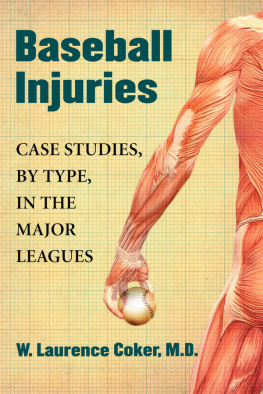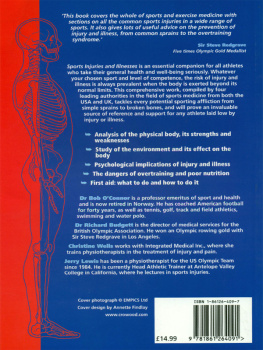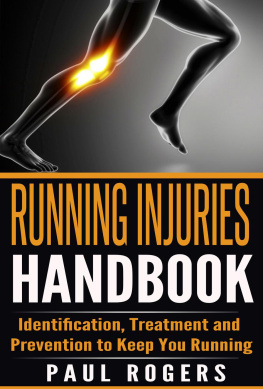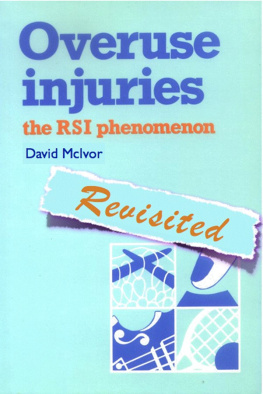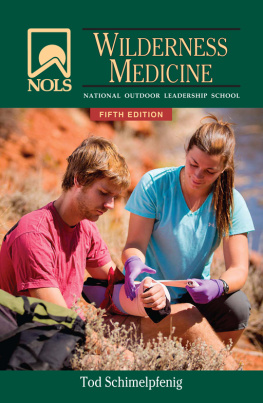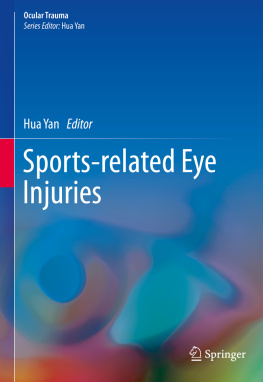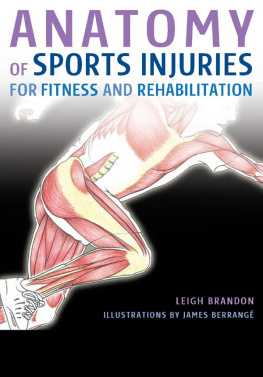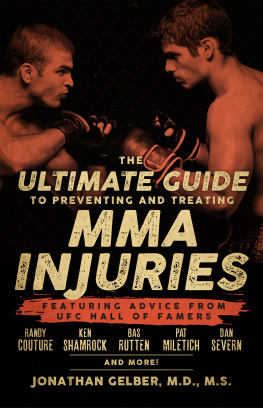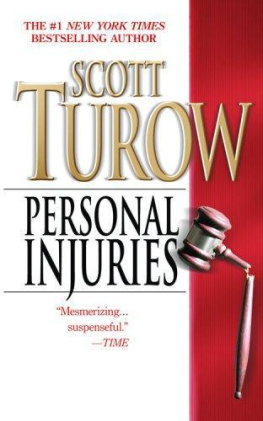
Baseball Injuries
Case Studies, by Type, in the Major Leagues
W. LAURENCE COKER, M.D.

McFarland & Company, Inc., Publishers
Jefferson, North Carolina, and London
LIBRARY OF CONGRESS CATALOGUING DATA ARE AVAILABLE
BRITISH LIBRARY CATALOGUING DATA ARE AVAILABLE
e-ISBN: 978-0-7864-9246-6
2013 W. Laurence Coker, M.D. All rights reserved
No part of this book may be reproduced or transmitted in any formor by any means, electronic or mechanical, including photocopyingor recording, or by any information storage and retrieval system,without permission in writing from the publisher.
Cover illustration 2012 Frederick R. Matzen
McFarland & Company, Inc., Publishers
Box 611, Jefferson, North Carolina 28640
www.mcfarlandpub.com
In memory of my dad,
Dr. Grady N. Coker, Jr.,
who got me interested in the sport of baseball
both as a participant and a fan
Preface
There is considerable interest in the subject of sports in the United States. Injuries are a major factor in sports, often determining who will win and who will lose on any given day. Through my discussions with acquaintances of mine whom I know are interested in sports, I saw that there might be some interest in a book about sports injuries.
But my book would not be a general book about sports injuries. It would have a unique viewpoint. Most sports injury books look just at injuries and their treatment. There are many medical books for healthcare professionals and lay people that present this slant on the subject of injuries. A classic example of this is a book I read while I was an active runner: Dr. George Sheehans Medical Advice for Runners. This book is a discussion of running injuries, what are the possible causes, and what to do about them. Within the book there are questions that individuals submitted to Sheehan during the time he was an acting editor for Runners World magazine. The contents: the book presents information in a systematic fashion from head to toe. The people submitting questions are for the most part listed anonymously, except the author, who discusses his own injuries.
Another example of a book that discusses sports injuries, and more in line with the content of this present book, is Injuries in Baseball by Andrews, Zarins, and Wilk. Injuries in Baseball looks at almost all possible aspects of baseball injuries, including surgical techniques and rehabilitation. But once again there are no specic players names mentioned.
I wanted to look at specic individuals with specic injuries. I wanted to tie a name to an injury as an example of the injury. The emphasis would be more on the individual. There are numerous articles on the Internet and in newspapers covering the material presented in this book, but I am unaware of any books solelydevoted to looking at types of injuries through examination of specic cases. There are biographies that discuss individuals injuries, but in context of the persons total life. There are books about specic teams and events, but once again the injuries are often just small parts of the total picture.
In this book I have combined the interest in sports injuries with the general interest in sports gures. Our society regards many of our sports gures as celebrities and heroes. There is much interest in these individuals lives. Why not look at these people and the injuries they have suffered while participating in their sports? Why not look at injuries that affected their lives?
Another point: a baseball players career ultimately ends. There are three main ways this can happen. First, as the player ages he gets more injuries, some of which are career altering. Second, as the player ages his performance in the eld declines by decreased quickness (i.e., the pitcher cant throw the ball as fast, the hitter cant swing the bat as fast, or the elder cant get to the ball as fast as before, etc.). Along with decreased quickness, power and strength decline with age. Last, a player may simply lose motivation and desire to continue his career. Certainly injuries or decreased performance can factor into decreased motivation, but off-eld issues, such as family concerns, can also factor into the equation.
A good example of this is Don Mattingly (discussed in more detail later), who developed back problems starting in 1987. Because of the back injury and subsequent pain he endured, he was forced to alter his usual swing to a less effective swing. His work ethic was affected by back pain issues, as he was just not able to practice as much in the batting cage as he did before the back issues arose.
Why write a book on sports injuries? Well, I have several reasons. First, I have had a life-long interest in sports both as a participant and a fan. Second, as a participant, especially as a runner, I have had my share of personal sports injuries. Third, even though my professional training is as a Family Practice doctor, I have had, and still do have, a special interest in sports medicine problems. It is not unusual for a family doctor, involved in all aspects of medical care, to have a special interest in one specic aspect of medical practice without actually specializing in that particular area. To add credence to this special interest, the Family Practice Board actually offers extra board certication in Sports Medicine.
From my interest in sports as a physician, participant, and sports fan came my inspiration for writing a book initially called Famous Sports Injuries. The idea was to cover many different sports, though mainly baseball, football, and basketball. The book would be about specic injuries in specic sports and the famous and sometimes not-so-famous players having those particular injuries. While gathering material to write the section of the book concerning baseball injuries, I realized that there was more than enough material on that topic alone to constitute a book-length study, leading to the present work.
When I talk about injuries I limit my discussion to signicant injuries. These are usually ones where the player goes on the DL (disabled list), unable to play. There are many injuries a player can play through, not missing practice or games, but the majority of injuries I want to discuss involve a trip to the DL. This trip may include the need for surgery to correct the injury. Some baseball injuries can be severe in nature: loss of consciousness, immediate consequences that lead to hospitalization, or even death. Fortunately death is a very rare event. Some of the injuries may have long-term consequences leading to decreased performance on the baseball eld or even leading to early retirement (e.g., Tony Conigliaros early retirement secondary to an impact injury to the eye from a beaning).
I make no attempt to discuss every famous injury and many injuries I present are not so famous. These latter injuries are mainly presented for two reasons. First, they are classic examples of the types of injuries associated with the game of baseball as opposed to other sports. Second, many of the not-so-famous injuries I cite occurred in the last several years, making information about them more accessible through newspaper and Internet searches. Also, good diagnostic tests to conrm the diagnosis of an injury have been presented.
On the ip side of the equation, players from the distant past are discussed less in this book. Information is less accessible or diagnoses are often given in vague terms. Its impossible to discuss an injury with any precision if one doesnt know what, exactly, the problem was. Often only the symptoms are mentioned (e.g., the pitcher had arm pain), and injury diagnoses are referred to in generic terms (e.g., the pitcher had a bad arm).
Next page
